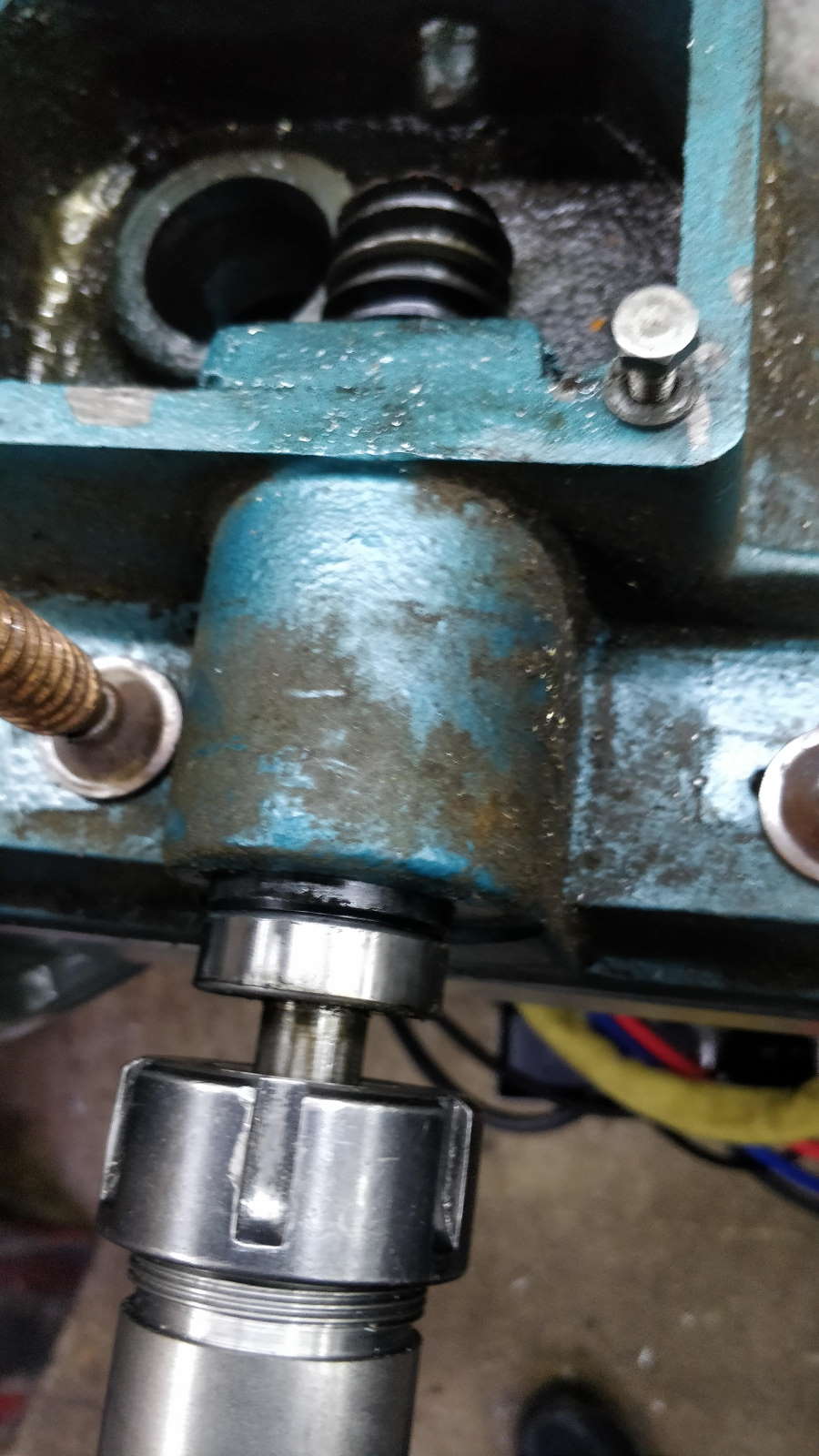ER32 Slide Hammer
 |
This is a tool that I made for a specific job: removing the worm shaft from my bandsaw. The shaft had a retaining plate on one end (which was easily removed) but was mostly retained by the friction from two pressed-in bearings and an oil seal. There was no obvious way to apply any substantial force onto the end of the worm shaft so I needed an alternative approach.
After asking on the excellent MIG Welding forum (which covers a much broader area than just MIG welding), the idea of a slide hammer was suggested. This only took me a couple of hours to make and did the job nicely.
 |
 |
These photos show the materials used to make the slide hammer (pink is my code for EN1A Leaded) and the components once machining was finished (except the hex section on the collet chuck, which I did after taking this photo). The collet chuck and the end piece were made out of 40 mm diameter EN1A for ease of machining. They both have an M12 tapped hole all the way through; the chuck then has the ER32 profile machined into it.
The shaft is a piece of 12 mm diameter EN1A Leaded, about 450 mm long (the length was chosen purely as a result of the existing length of the stock). A short length has been threaded M12 on each end. The sliding hammer piece is a bit of 50.8 mm diameter 303 that has had a 12 mm hole drilled all the way through. Again, the size of material was chosen based on what I had in the drawer.
 |  |
These photos show the slide hammer in use. As I said above, the slide hammer successfully removed the worm shaft from the bandsaw's gearbox. I don't think the ER collet system is ideally suited to use as a slide hammer: the collet nut worked itself loose after a few "hits" of the hammer and would need re-tightening. Having said that, it did the job and had the advantage that I already had the required collets and collet nuts and hence saved a lot of time in making the tool.
All being well, I won't have to use this tool much more, but it's a nice example of how sometimes the best option is just to make a tool to do a job: I've no idea how I would have got this shaft out without damaging (e.g. drilling) the gearbox casting.
This website is free, but costs me money to run. If you'd like to support this site, please consider making a small donation or sending me a message to let me know what you liked or found useful.